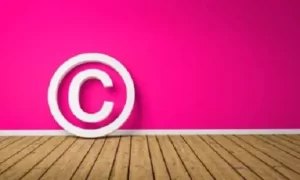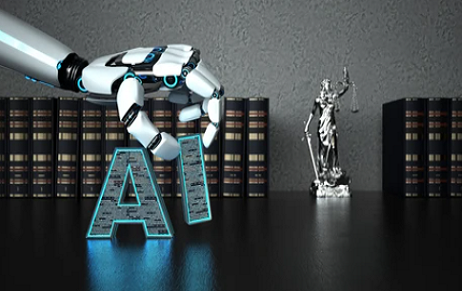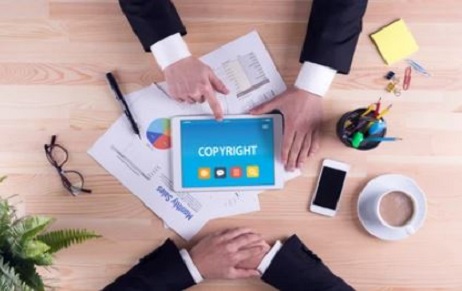Introduction Artificial intelligence (AI) has emerged as one of the biggest game-changers in recent years…
Protection Of Voice Actor’s Work By Copyright
Introduction
India is only the fourteenth largest entertainment and media market in the world, with industry revenues contributing roughly one percent to its gross domestic product. Voice-over artists have a vital part in box office success because they significantly influence the emotional synchronisation between the audience and the visuals displayed. Even if these artists play a crucial role in attaining the numbers, they are typically under-recognized and under-compensated, whilst the actors and other prominent artists make a fortune from the films. It should be taken into account how voices are used and re-used across multiple mediums to establish affinity with the visuals, despite the fact that the community of voice actors is underestimated for their substantial contributions.
[Image Sources : Gettyimages]

Voice Artist – Performer?
A performer is any individual who delivers a live visual or an acoustic presentation. There is no rigorous definition of a performer. As per recent case law, Neha Bhasin v. Anand Raj Anand, the High Court of Delhi held that a live presentation in a studio is also a performance even when it may be without an audience. As per this logic, it can be deduced that a voice actor is also a performer even though the performance is delivered in the studio. A statement to such effect can be found in Rule 68(4) of the Copyright Rules, 2013.
In the case of Experience Hendrix LLC v. Purple Haze records Ltd., it was held that one could protect his voice through the performance, but the voice in isolation isn’t likely to be protected. In the case of Midler v. Ford Motor Co., Bette Midler, the voice actor, asserted her rights, which were imitated in the Ford advert. The Court of Appeal held that a voice is not copyrightable per se in the copyright act, but common law rights could be enforced since a voice is as distinctive as one’s face.
Performers often do not own the copyright in the recordings on which they appear. They might not even have a relationship with the copyright owner that allows them to share in any money the copyright generates. However, a line can be drawn to assert the fact that a voice may not necessarily be protected, but the underlying work, which includes the recording of that voice, can be protected.
Trademark & Patents for Voice Actors
A mark may be registered as a trademark if it can be visually depicted to distinguish one party’s goods from those of another. Speaking of sounds, it may be tough to fixate and reproduce them graphically because a clear and accurate representation may be difficult to obtain. However, as governments began to recognise and accept MP3 recordings of various works, a number of voices and noises were effectively registered.
Sounds may be registered in the United States if they evoke an association with particular goods and services in the mind of the buyer. Therefore, in order to qualify for registration, the voiceover must be distinct and definitive. Under the Trademark Law, a jingle in a particular commercial that is sung in a distinguishable style or a phrase may be protected. In general, though, registering a voice as a trademark is not something the law permits.
A voice actor cannot be protected by the Patent Law. In the United States, however, certain inventions using sound as a primary component have been protected. Despite the fact that patents do not provide a clear method for protecting a voice, they provide some intriguing applications in relation to voices in general. In a word, a patent is an exclusive legal right issued by the government for an invention that is novel, imaginative, and industrially applicable.
A patent owner is granted the exclusive right to prohibit others from creating, utilising, selling, offering for sale, or importing the patented process or product(s). According to the writer’s interpretation of the patent, the module absorbs a voice, analyses it for specific features, and modulates it when utilised to imitate the voice it has been listening to. It is very evident that patents cannot protect a person’s voice; nevertheless, as AI and technology improve and develop, they will be at the forefront of protecting systems that may one day mimic sounds and voices.
Requirement of Ordinary Observer Test
The “ordinary observer” test was adopted by the court in R.G. Anand v. Delux Films, where it was held that if the reader, audience, viewer, or observer, after reading or viewing both works, is indisputably & undeniably of the opinion that the subjected work appears to be a copy of the original, then there has been an infringement of copyright. This criterion was first recognised in the United States in the case Daly v. Palmer.
In essence, the test states that violation can be shown if a licence for the identical work has not been obtained and an ordinary viewer decides from a comparison that the works are comparable. R.G. Anand emphasised further that the parties’ intent to imitate must be established by examining not just the tangible similarities but also the wide dissimilarities. It also considered that if the topic is the same but the presentation is different, the subsequent work is “totally fresh” and no infringement can be established. In Twentieth Century Fox Film Corporation v. Zee Telefilm, the courts stated that the infringement must be substantial, and to evaluate this, the accused portions must be evaluated separately and then as a whole to determine the degree of resemblance. In addition, they ruled that the determination of substantial infringement must be based on the quality of the infringement rather than its quantity.
These voice performers need copyright protection for their voices, and in order to get it, the ordinary observer test needs to be used. In order to determine whether there has been substantial infringement, the asserted elements must be examined both alone and collectively to establish any similarities. Furthermore, they decided that the nature, rather than the extent, of an infringement should be taken into account when deciding whether or not there has been a serious infringement.
CONCLUSION
For their work to be protected from others who would plagiarise it and publish it several times without permission or payment, voice actors require legal protection and equitable reliefs. To ensure this, “Voice Actors” must be explicitly recognised as performers under the Copyright Law. In order to ensure copyright protection in each and every instance, it is necessary to use the ordinary observer test in these situations. The community of voice actors must be educated and made aware of their rights and how to exercise them without falling into the sticky traps of private petty agreements. Academicians and legal professionals should examine the topic in order to establish a suitable method for addressing unknown concerns in the relevant field of law and ensuring ethical behaviour and business practises.
Author: Saransh Khandelwal – a student at National Law University (Jodhpur), in case of any queries please contact/write back to us via email to [email protected] or at IIPRD.



